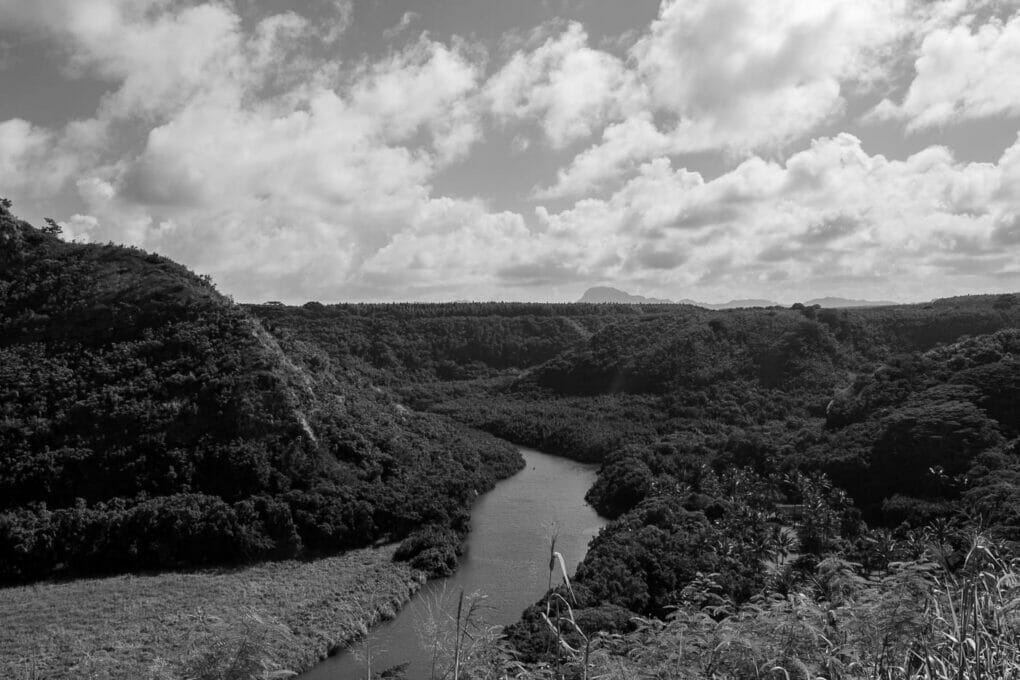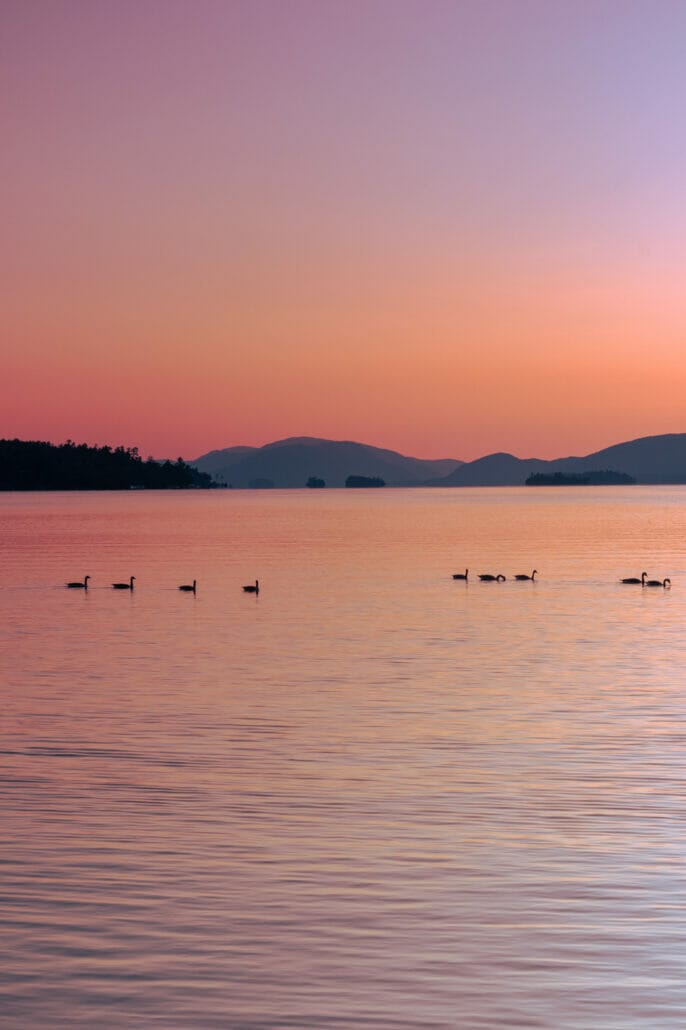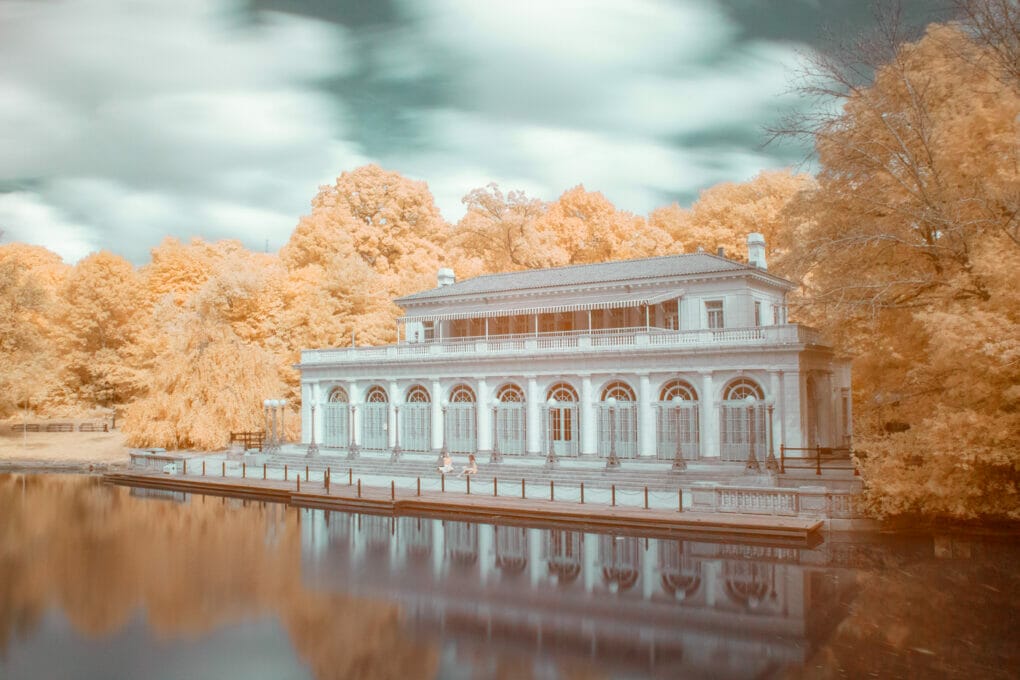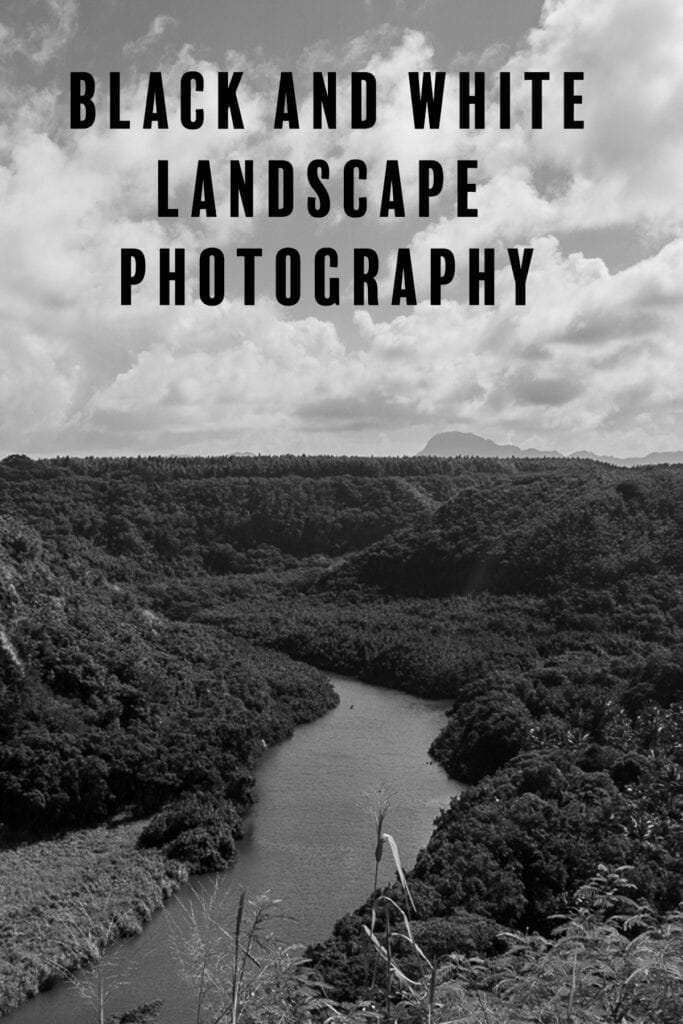
I have a complicated relationship with black and white landscape photography. Nature has so many pretty colors. I get distracted by the colors and the scene that I sometimes forget about telling a story through my photos.
Black and white landscape photos shouldn’t be an afterthought. Most times, I take a shot and decided if I’m stripping the color while editing in Lightroom. Rarely do I look at a scene and think, this would be beautiful in black and white. I’m trying to get better at it.
Shoot RAW
If you have a DSLR camera and Lightroom, shoot in RAW instead of JPEG. You’ll have an easier time editing when you do. Cameras have a black and white mode. I never use it. Some photos look good in both color and black and white. I’d rather have more control over how my photo turns out. I shoot in color and change it to black and white in Lightroom.
Snow is great for black and white landscape photography
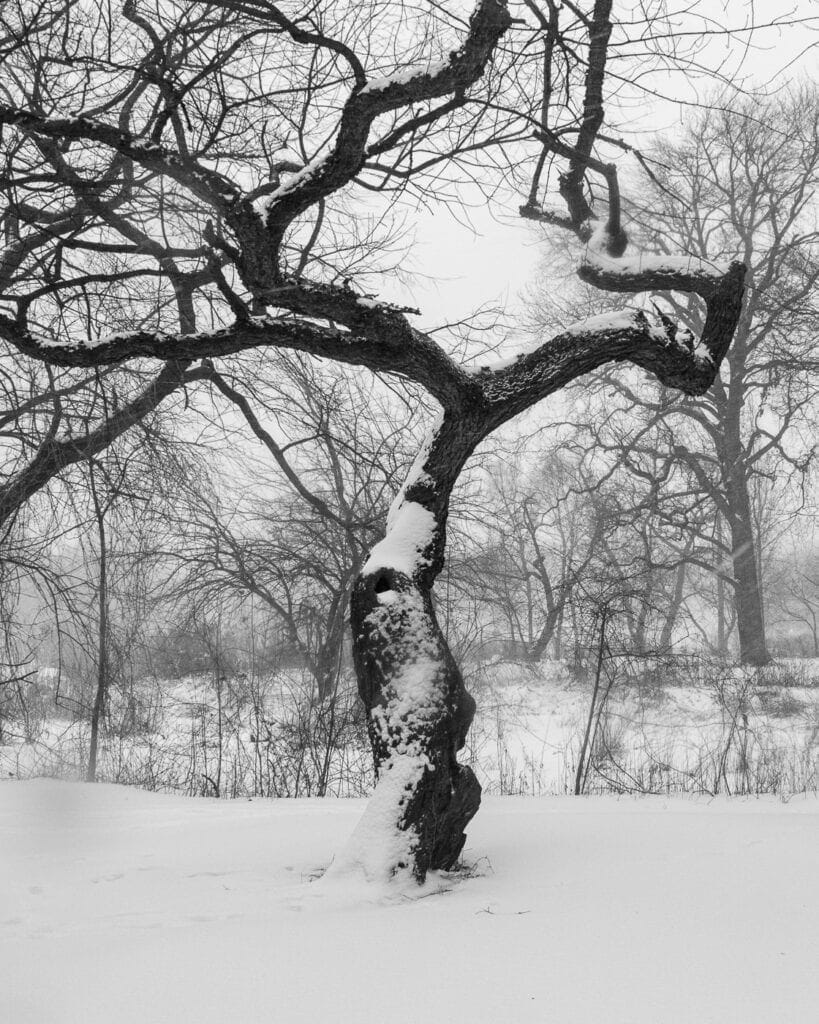
Keeping with the winter photography theme from the last post, snow simplifies the landscape. It’s a perfect environment to capture beautiful black and white photos.
Sometimes, your shot comes out naturally black and white. With the bare winter trees and snow-covered ground, most photos won’t have any color. Winter is also a good opportunity to take advantage of the interesting shapes and textures of the trees.
Look for lines
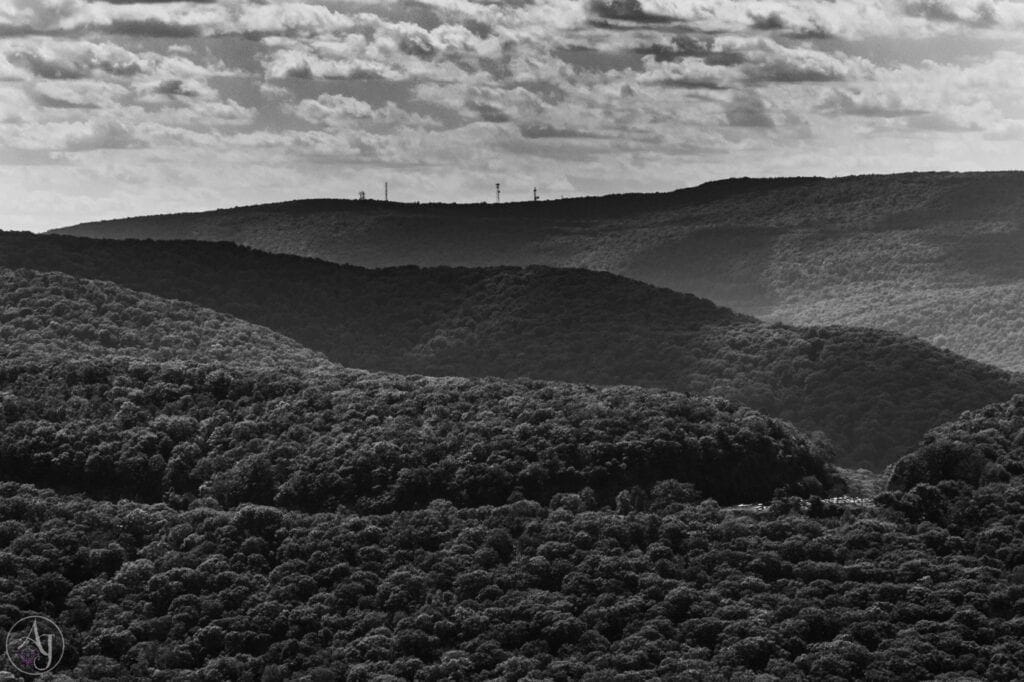
Probably one of the first scenes I captured with the intention of turning it black and white. I took this shot because of those lines leading to the top. The mountain also has a nice contrast between light and dark areas.
Find contracts
Speaking of contrasts, for black and white landscape photography, you don’t have those nice pops of colors to draw the eye through the photo. Make sure you find contrasts to stop your photo from looking too flat.

This photo doesn’t just rely on the nice textures of Waimea Canyon in Hawaii. Sunlight colors each section differently giving the scene some nice contrasts.
Textures are your friends
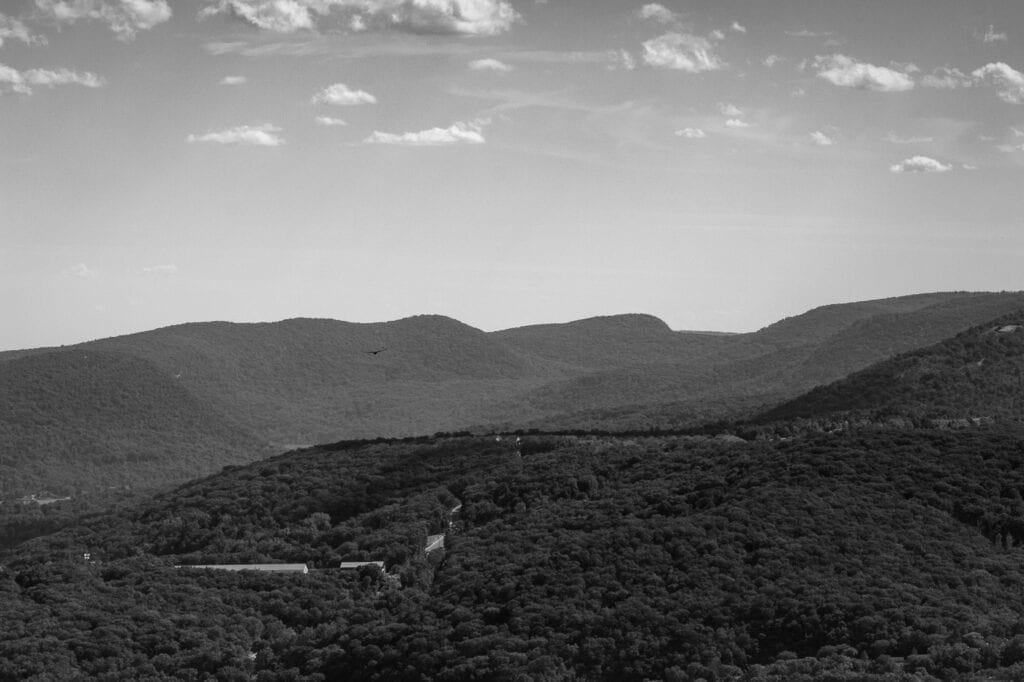
This photo’s doing a couple of things. The mountains in the back are so far away that they have a softer texture than the ones in the front. That provides a good contrast. Then, you have the road line leading you through the scene. You have another mountain line separating the different textures. The sky’s boring but it also makes the mountain stand out, which is why I didn’t crop it out. Use white space to your advantage.
Clouds are perfect for giving your black and white photos a good focus texture.

In the below photo, you have nice texture and contrast in the land itself. The clouds add an extra atmosphere to it. And they cast interesting shadows.
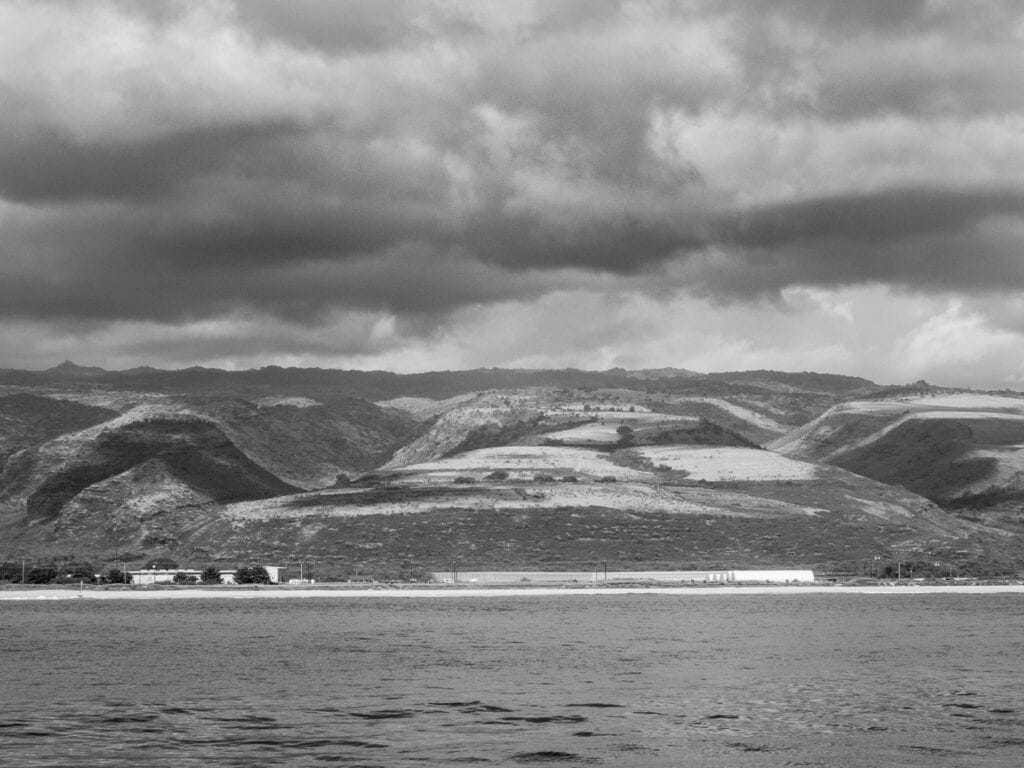
Use black and white landscape photography to fight the harsh midday sun
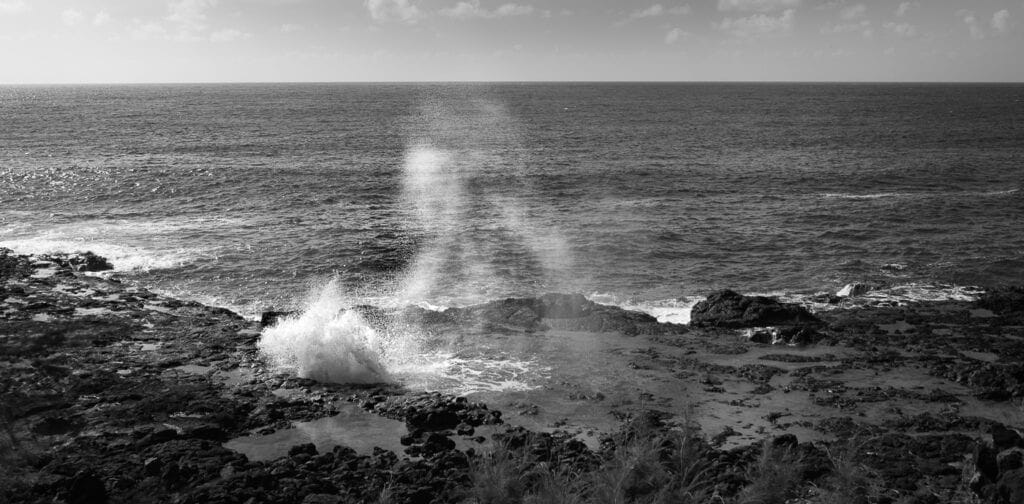
It’s difficult to get a perfectly exposed photo in the middle of the day under a cloudless sky. The whites are too white and the shadows are too dark. But sometimes, you may have to photograph in those conditions.
When in Hawaii, I went on an island tour. We stopped at Spouting Horn during one of the worst photo times of the day. However, I knew I wouldn’t be able to return at sunrise or sunset. I was not walking away without a photo. But, it was so difficult getting a good shot of the scene. I couldn’t even fix the exposure issues in Lightroom. So, I turned it black and white. Made the photo a lot better.
I had the same issue with this photo.
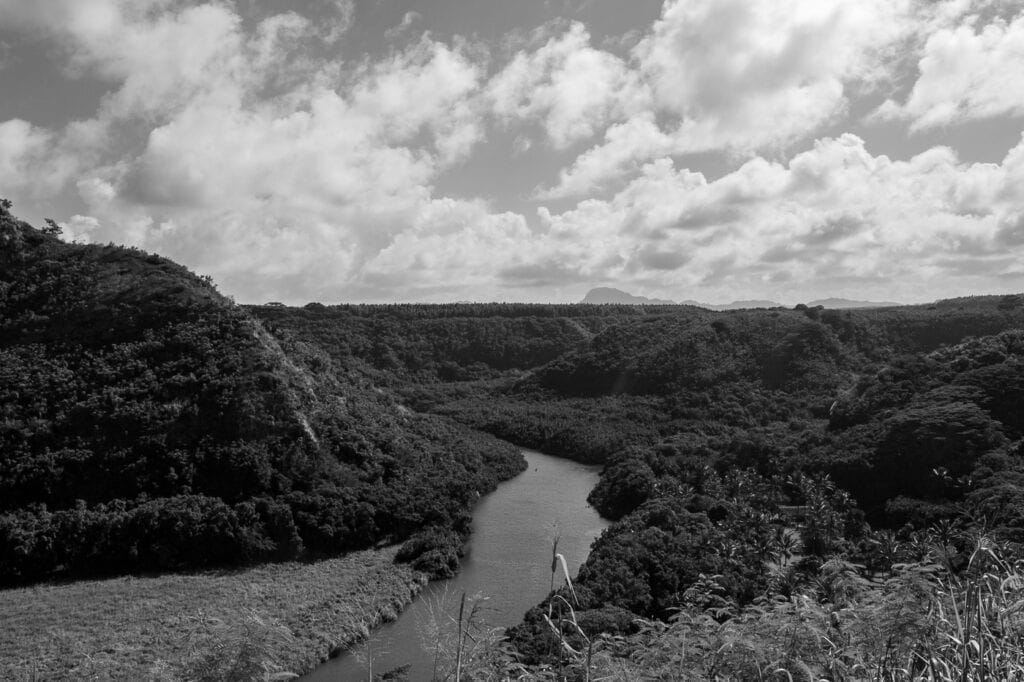
It’s a beautiful scene but that sun wreaked havoc on my exposure. So, I turned it black and white. That river acts as a leading line through the scene. That sunlight colors the landscape differently giving you nice contrast between the foreground and the background. Stripping the color also brought out the small mountain way in the distance that I hadn’t noticed before.
Take advantage of light and shadows
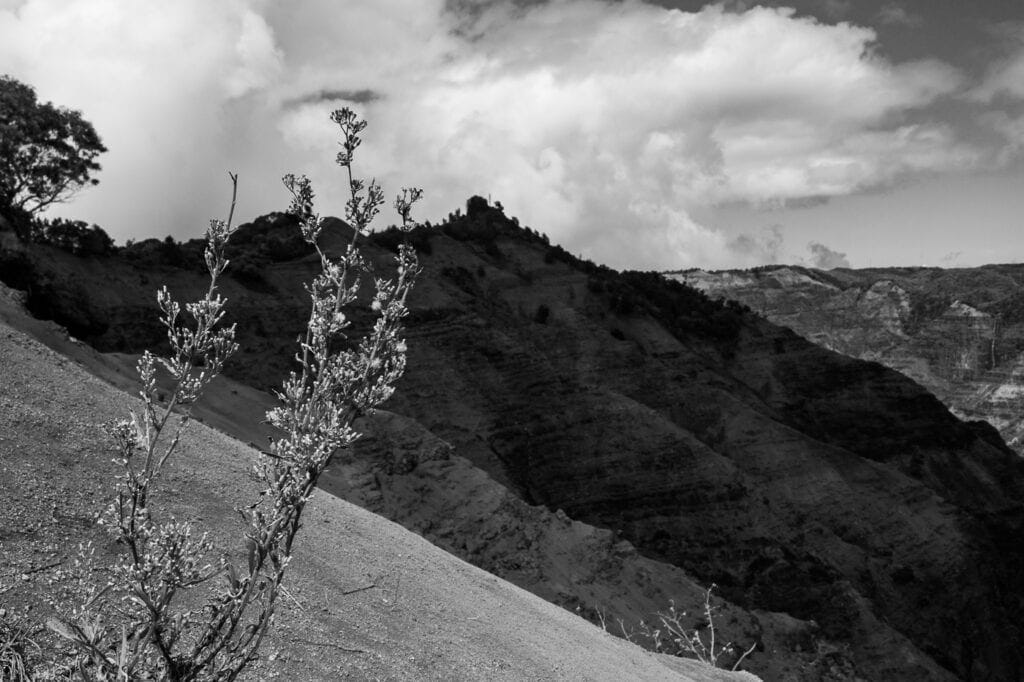
Let’s return to Waimea Canyon. That plant only stands out because part of the background is in shadows. If the mountains in the back were lit the same as the foreground, the plant would blend in with everything. Those shadows also act as a spotlight since everything else is brighter.
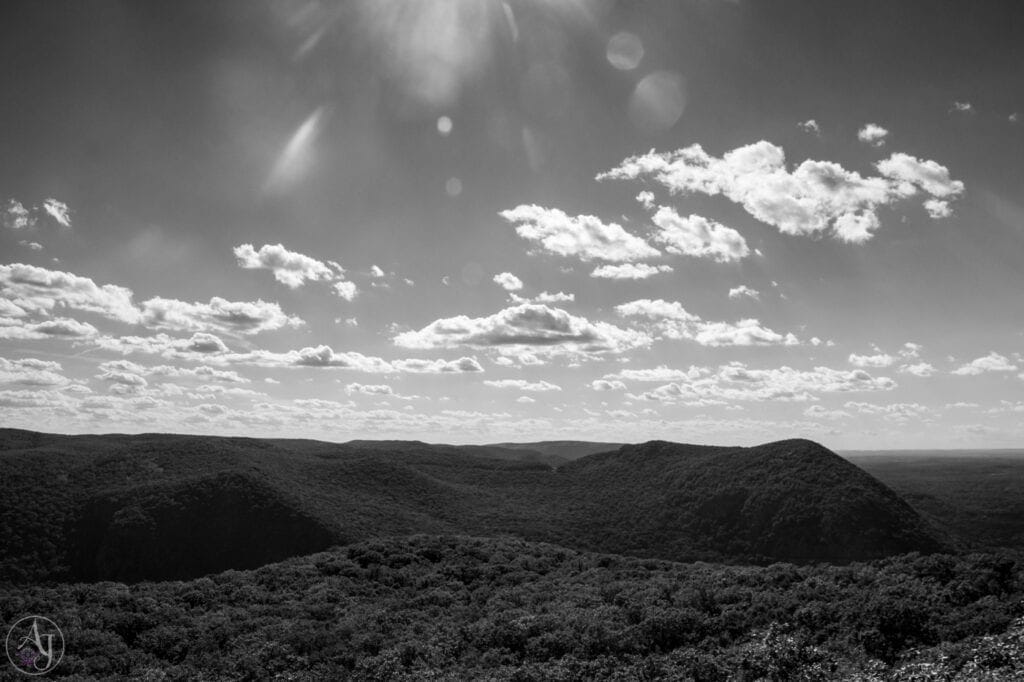
Black and white changes your photo’s story. It simplifies the scene. That can be both a good and bad thing. Some of my photos didn’t work as black and white because they weren’t sharp. Taking away the color put far too much emphasis on the soft subject.
Post-processing is key for black and white landscape photography. Study other photos and get an idea of what yours are supposed to look like. Practice. I have a Pinterest board for Black and White Landscape Photography inspiration.
More resources
6 Tips to Help You Make Better Black and White Landscape Photos

